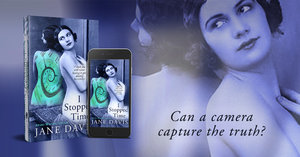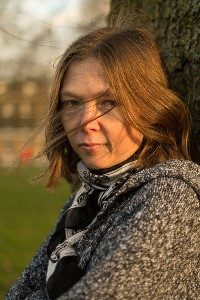Today, I’m delighted to welcome Kendra Olson to Virtual Book Club, my interview series which gives authors the opportunity to pitch their novels to your book club.
Kendra is the author of the coming-of-age, historical, folk novel The Forest King’s Daughter.
She enjoys writing historical and literary fiction as well as creative non-fiction. She also edits in these genres. When she’s not writing or editing you can find her curled up with her two long-haired rescue cats and a good book.
Book blurb:
The year is 1886 and Swedish teenager, Ingrid Andersdotter, is about to face a series of life-changing events. When Ingrid forgets to close the barn door one freezing cold night, there will be dire consequences for her family. To make matters worse, her attraction to the new school teacher leads to ostracism and shame. Ingrid’s strong opinions and the pressure of the powerful village church to conform to ideas she doesn’t believe in put her at odds with her traditional community.
Her only option is to leave her home and family. But is she brave enough to make an ocean crossing to a strange new land on her own, leaving everything she knows far behind? And will she find the freedom she dreams of if she takes such a risk?
Told through the lens of a Swedish fairy tale, this epic coming-of-age story, is both a page-turning personal account of one feisty young woman’s determination to seek a better life, and the tale of many single women who emigrated from Sweden to America in the 19th century.
Q: Welcome, Kendra. I’ll start where I always start. What is it about your novel that makes it particularly suitable for book clubs?
A: Well, I hope that the story is both entertaining as well as (emotionally) satisfying to read. However, on a deeper level, I like to think the book raises questions about narrative more generally. A lot of historical fiction is written about the lives and achievements of well-known individuals, but there are far fewer stories about everyday people and their adventures and misfortunes. This is especially true of women and the poor. The protagonist in my novel—Ingrid—is an impoverished young croft woman (torpare, in Swedish) who endures the prejudices of her time and bravely sets out to seek a life of her own.
If any book clubs would be interested in reading the novel then I’d be happy to visit and chat about it, either in person, if they’re in London, or via Skype.

Click here to look inside or buy.
‘Ingrid is a strong and engaging character, and whilst this is her story, it’s also very much the story of hundreds of young women like her who have felt compelled to leave home and face the unknown in a foreign land.’
‘There is humour, despair, hope and challenge; a great story.’
Q: Why do you think adult fairy tales are so popular at the moment?
A: I think their popularity is due to a desire to hearken back to a simpler, pre-modern time when life felt very different and there was still so much to learn and discover. Fairy tales bring us back to our primordial, childlike state, when life, and all that it contained, was new and mysterious. Small children don’t try to understand the world, they merely experience it. But modern life has altered this experience for many of us.
Q: How did you get into the mind-set of a person living in 19th century rural Sweden?
A: I began by reading novels which were written at the time. I also read contemporary writers whose novels were set during this period in history—this allowed me a glimpse into how modern-day Swedes viewed this period of their history as well as giving me a sense of how I might make the period more accessible for present-day readers. History books played a large part, as did reading emigrant diaries. But, generally, I tried to immerse myself in the world my characters lived in, as much as was possible. This involved listening to Swedish folk music (or folkmusik), learning some of the language, looking at old clothes from the time period, studying paintings and photographs and trying out some traditional Swedish recipes in order to surround myself with the sights, smells, sounds and tastes that my characters would have experienced.
Q: I’m interested in why you chose to bring this particular story from the past into the present day.
A: After losing my grandfather, whom I was very close to, I began to think about the ways in which families change over time and distance. My grandfather came from a long line of Scandinavian Americans, many of whom settled in Minnesota and eventually ventured out to other states. He was one of our last surviving (American) relatives who grew up speaking some Swedish at home. His maternal grandmother emigrated from Sweden in 1891, alongside many other young women of her generation. Although she died long before I was born, I’ve heard stories about her and been to visit the house she was born in and lived in before her emigration.
She interested me as she’d left Europe never to return and here I was returning over 100 years later, as a young woman. It was a family connection I had forgotten about. I wanted to explore what went into such a decision. However, I never did find out and Ingrid’s story stems purely from my imagination.

Kendra at Hogtorp where her great great grandmother grew up , Copyright B Mossop
Q: Maggie O’Farrell says, ‘The way I see it, the past and the present are not separate. The present is the past amended, particularly in the way we apprehend it, our memories and nuances.’ Is that something that you like to explore in the timeline of your novel?
A: It is, very much so. Prior to writing The Forest King’s Daughter I became fascinated by the stories of immigrant and refugee women, many of them contemporary. People, including single women, have always emigrated to escape poverty, religious persecution and political oppression. While these refugees were once emigrating from Europe to America and Canada in search of better lives, they’re now Syrians and Africans leaving their home countries in search of a better life in the West. I think this is a narrative the West has tried to suppress. I’d like to think that by considering the aspects of Western and European history which are similar, readers can come to greater empathise with the plight of the modern day immigrant.
Q: Who gave you your first encouragement as a writer?
A: My grandfather, who was himself a writer and editor. He wrote and edited children’s publications for much of his life. If it weren’t for him I’d never have believed I had what it takes to be a writer. He always believed that I could achieve whatever I put my mind to.
Q: Is your day job a distraction or does it add another element to your writing?
A: I work as a freelance developmental editor—a big picture, story editor—and I find that guiding other writers to shape their stories enhances my own writing. Discovering the weak areas in another writer’s novel and working with them to find sustainable, creative solutions helps me to see where my own writing is going wrong. It’s excellent motivation to keep at my craft—if an author I’ve supported can take their manuscript from good to great then maybe I can too. Of course, I’ve worked with some very talented writers and it’s always easier to advise someone else on their writing than it is to fix your own!

Q: How do you cope with the self-doubt that seems to plague the creative process?
A: I try to keep a sense of perspective and honour the process. Each story/piece/novel that I write better prepares me for the next piece of writing, whether or not it’s published. I also try to break things down into bite-size pieces so they feel less intimidating. Recently I’ve discovered author Sarah Painter’s podcast The Worried Writer, which is inspirational. I’d recommend it to anyone struggling with self-doubt.
Q: Regardless of genre, what are the elements that you think make a great novel?
A: A unifying theme which resonates with the protagonist’s journey. If this is mirrored in the use of setting and the structure of the novel then that’s even better. If a reader comes away questioning their view of the world then the story has been successful. I also want a protagonist I can relate to, even if I don’t exactly like him/her at the beginning of the story. Last, but not least, there needs to be a suitably strong conflict which resonates with the human experience. If I come away from a story with a greater sense of empathy, then I know I’ve read an exceptional story.
Want to know more?
You can read a sample of The Forest King’s Daughter for free on Instafreebie.
Kendra’s author website: https://kendraolson.wordpress.com/
Kendra’s editorial services website: https://kendraolsoneditorial.com/ Full developmental edits, critiques, opening chapter reviews and more.
You may also enjoy this interview for The Shelf of Unread Books.
Twitter @KendrarOlson
Facebook https://www.facebook.com/Kendra-Olson-1479392189025196/
If there’s anything else you’d like to ask Kendra please leave a comment.
Just a reminder that until 31 May, Smash all the Windows is on sale for the price of 99p/99c or equivalent. See why the first 20 reviews have all been 5 star reviews. books2read.com/u/49P21p
To have future posts delivered directly to your in-box, visit the sidebar on the right and subscribe to my blog, or to find out about new releases, competitions and freebies, subscribe to my newsletter and I will send you a free copy of my novel, I Stopped Time, as a thank you.
While I have your attention, can I please draw your attention to my updated Privacy Policy. (You may have noticed, they’re all the rage at the moment.) I hope this will reassure you that I take your privacy seriously.
Remember, if you enjoyed this post please share it.
If you have subscribed to my blog but no longer wish to receive these posts, simply reply with the subject-line ‘UNSUBSCRIBE’ and I will delete you from my list.



